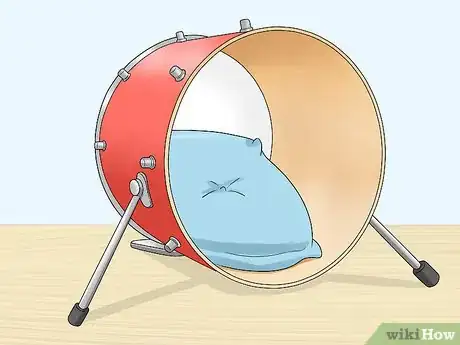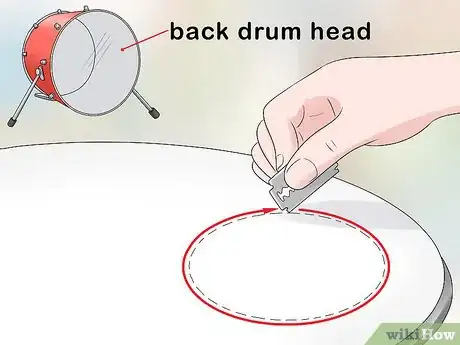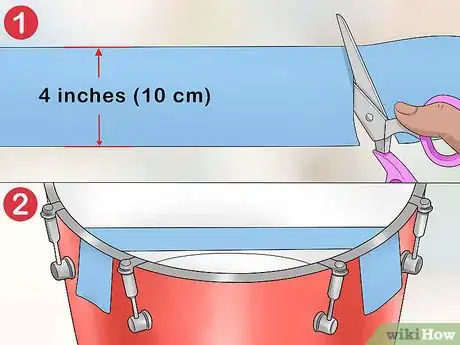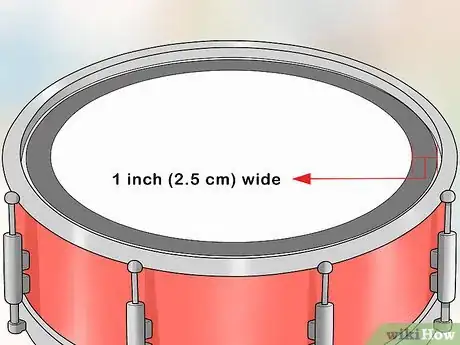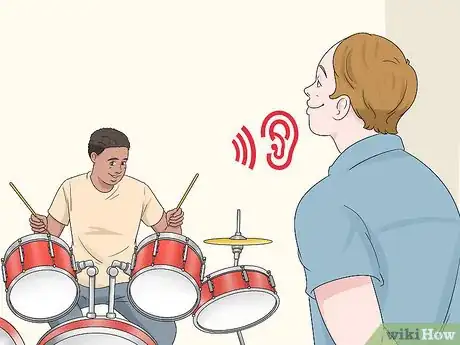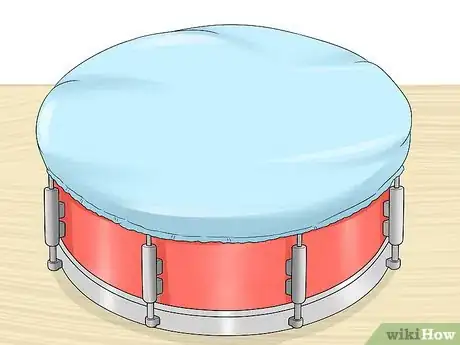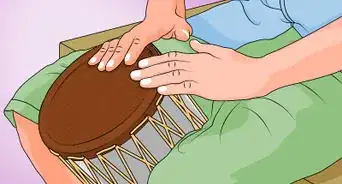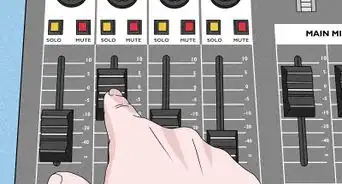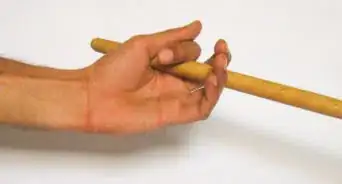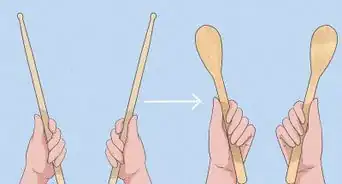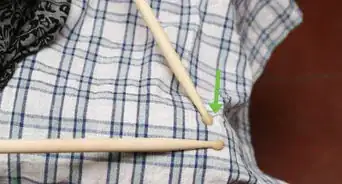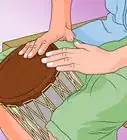X
This article was co-authored by Matt Khoury, a trusted member of wikiHow's volunteer community. Matt Khoury is a seasoned drummer with over 25 years of experience. He started playing in high-school band and at church, which expanded into opportunities to play with bands in front of thousands of people across the United States.
This article has been viewed 55,911 times.
Learn more...
Dampening, or muffling, is a method of reducing the resonance or harsh overtones that drums sometimes emit. Many drum head manufacturers offer heads with built-in dampening, but sometimes further modification is necessary. Here are some of the more popular techniques of dampening drums.
Steps
Method 1
Method 1 of 3:
Using Cloth
-
1Put a blanket or pillow inside your bass drum. Experiment with the placement of the muffling. Note the difference of sound when the muffling is touching or not touching the batter head. The batter head is the drum head that is struck with the kick pedal.[1]
-
2Cut a hole in the back drum head to reduce resonance. The drum head is the head that is not struck by the pedal. Use a razor blade and cut somewhere between the rim and the center of the drum. Use a bowl or coffee can to outline the cut. A bigger hole results in less resonance.Advertisement
-
3Place a cloth strip against the inside of the batter head. Cut a strip of cloth about 4 inches (10 cm) wide. Secure the strip against the drum head by tightening the ends inside the tuning rim. The strip is usually set to the left or right side of the drum head, not in the center.[2]
Advertisement
Method 2
Method 2 of 3:
Using Dampening Gel
-
1Place dampening gel on the batter head of your snare or tom drum. A few companies offer these small gel pads, which stick to the drum head and offer light dampening. Put it in a spot where you will not hit it when you play.[3]
- Slowly run your thumb around the top of the drum in a circle, about 1.5 inches (3.8 cm) from the rim, while striking the center of the drum. Take note of the position of your thumb when the drum muffles best - this is usually a good place to stick the gel.
- Move the gel around and listen to the different timbres you create by placing the gel in certain spots. Add another gel pad or two if you want more muffling.
- If you find the gel to dampen more than you'd like, most muffling gels can easily be ripped into smaller pieces.
- In a scenario where the use of muffling gel is for a temporary function such as recording, be sure to put the gel back in its case, as it will dry out and lose its stickiness.
-
2Put a drum ring on top of your snare or tom drum. Drum rings are usually about 1 inch (2.5 cm) wide, made of thin plastic, and rest around the diameter of the drum. Although these rings are available in music stores, you can make your own by cutting a circle from the outer edge of an old drum head with a razor blade.[4]
-
3Put a strip of duct tape on the batter head. Experiment with different lengths of tape to find the right sound.[5]
Advertisement
Method 3
Method 3 of 3:
Using Mutes
-
1Stand where the audience will be when you are playing your drums (if you are dampening them for a performance).
- Have someone play your drums while you listen.
- Adjust the dampening as you see fit. The sound of a drum differs greatly from the drummer's position to the audience's.
-
2Drumtee mutes also work well at giving you a quieter sound while enabling you to retain stick bounce you can also try buying a drum bad that fits your snare. they manufacture dampeners already.
Advertisement
Expert Q&A
-
QuestionWhen should you dampen your drums?
 Matt KhouryMatt Khoury is a seasoned drummer with over 25 years of experience. He started playing in high-school band and at church, which expanded into opportunities to play with bands in front of thousands of people across the United States.
Matt KhouryMatt Khoury is a seasoned drummer with over 25 years of experience. He started playing in high-school band and at church, which expanded into opportunities to play with bands in front of thousands of people across the United States.
Veteran Drummer It all depends on the sound you want to attain. For instance, depending on the venue, I often dampen my kick drum, because the acoustics vary from building to building. You have to tune your drums to the correct sound, but you also have to tune them to the venue where you’re playing.
It all depends on the sound you want to attain. For instance, depending on the venue, I often dampen my kick drum, because the acoustics vary from building to building. You have to tune your drums to the correct sound, but you also have to tune them to the venue where you’re playing. -
QuestionDoes it matter what the pillow is made of?
 Community AnswerNo, not really. If it works, it shouldn't matter what the pillow is made of.
Community AnswerNo, not really. If it works, it shouldn't matter what the pillow is made of. -
QuestionCan I use material inside the bass drum?
 Community AnswerYes. You can use soft materials that won't get thrown around in the drum.
Community AnswerYes. You can use soft materials that won't get thrown around in the drum.
Advertisement
Things You'll Need
- Pillow or blanket
- Razor blade
- Bowl or can
- Cloth strip
- Drum gel
- Drum rings
- Tape
References
- ↑ https://www.freedrumlessons.com/articles/drum-muffling.php
- ↑ https://www.musicradar.com/tuition/drums/how-to-tune-a-bass-drum
- ↑ https://www.youtube.com/watch?v=SZPlOyFKFDM
- ↑ https://www.freedrumlessons.com/articles/drum-muffling.php
- ↑ https://www.youtube.com/watch?v=SZPlOyFKFDM
- http://www.freedrumlessons.com/articles/drum-muffling.php
- https://en.wikipedia.org/wiki/Drum_set_tuning
About This Article
Advertisement
